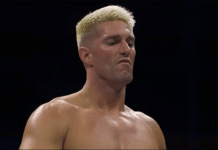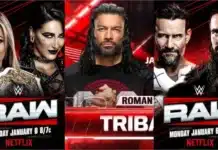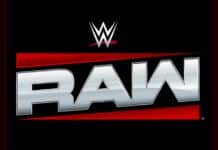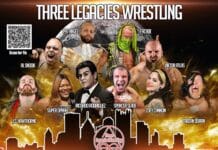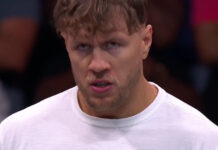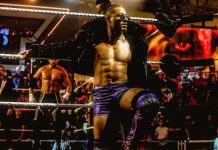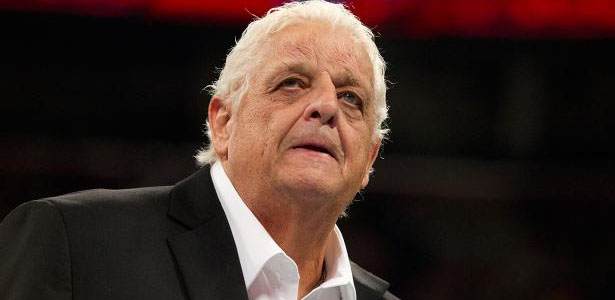
Today marks 28 years since Fall Brawl 1994, a broadcast that took place in the midst of another transitional period for the organization. After being in flux for the majority of its existence under the Turner banner, WCW at least had a clear vision under Eric Bischoff, who knew the company needed star power and a presentation that took it out of the dimly-lit arenas that the promotion was known for before that. It still puzzles me that a broadcast company owned the wrestling division, but went nearly five years with subpar production value. Fall Brawl was somewhat of a bridge between that gritty early- 90s era and the period that Nitro went head-to-head with Raw. Hulk Hogan, Vince McMahon’s golden goose for the previous decade, signed with Ted Turner in May 1994 and was the key piece of the puzzle that came together over the next few years with the addition of names like Macho Man, Scott Hall, Kevin Nash, and others. Landing Hogan let the stars of the industry that the Turner organization was willing to invest in the wrestling project, which meant big paydays for the competitors that listened to Bischoff’s pitch.
By Fall Brawl, Hogan was already at the top of the card, setting up a cage match against Ric Flair for the championship in a rather odd segment on this show, where they literally argued on the phone for almost ten minutes, for Halloween Havoc. On the flip side, Cactus Jack, who made a splash on the national scene in the previous few years, was on his way out of the company after this pay per view. Along the same lines, the booking of Steve Austin made it clear that his tenure was limited.
The show opened with Steven Regal against Johnny B. badd and was a solid way to kick off the PPV. Nothing against Marc Mero, but this was a showcase bout where the heel really shined the baby face, with Regal making his opponent look like a million dollars. There’s a reason why the British grappler is so well regarded, and he made Johnny B. Badd look like a star in this contest. To his credit, Mero played his role very well and was the best choice to play the Johnny B. Badd persona. As we know he never quite found his groove outside of the gimmick presentation, which is probably the reason why his success was limited during his WWF run. Still this was good start to the show, and Badd got the victory to claim the WCW Television championship.
Next was Cactus Jack vs Kevin Sullivan in a loser leaves WCW match, and as mentioned this was the way Cactus was written out of the company. Somehow, six months after losing an ear in Germany, WCW management not only didn’t use it to push him, but also didn’t see the downside of letting Cactus onto the free agent market. Granted, it’s easy to criticize Bischoff’s lack of plans for Mick Foley, but it’s important to take the context of the time period into consideration. Keep in mind, this was at a time when Bischoff specifically wanted to shine the WCW presentation with the Disney tapings and improved production value of the shows in an attempt to create the perception that the Turner brand was on the same level as the WWF at the time. Cactus’ wild style was legendary, but it didn’t necessarily fit with the more polished image that Bischoff wanted to represent the WCW product. That said, I’m not sure if Mick wanted to prove a point with this bout or considered it an audition for another major company, but he didn’t mail in this performance. This was a really entertaining brawl, and Cactus took some absolutely brutal bumps on the concrete, including a slam from the middle rope to the floor. Jack collided with Dave Sullivan on the apron and that allowed Kevin Sullivan to get the win. This is definitely a match worth going out of your way to watch on this pay-per-view.
“Stunning” Steve Austin was scheduled to challenge the legendary Ricky “The Dragon” Steamboat for the United States championship, but the injury that eventually forced Steamboat to retire led to him vacating the title. Austin celebrated as if he was the new champion until “Hacksaw ” Jim Duggan made his way to the ring to compete. Nick Bockwinkel, who did a great job as a figurehead in WCW was very well spoken and looked like someone of authority, informed Austin that he would have to wrestle Duggan to win the title. “Hacksaw” landed some of his trademark clotheslines and punches, defeating Austin in about 25 seconds to win the belt. “Stunning” Steve floundered for about another six months before he was released from his contract while he was on the sidelines with an arm injury. There’s really not too much to say about the actual segment and other than the surprise title switch, there wasn’t much substance to it as far as a pay-per-view contest.
#OnThisDay in 1994: WCW Fall Brawl: Paul Orndorff hits his wacky ass elbow/forearm with theatrics spot. pic.twitter.com/5Zngrt9cpa
— Allan (@allan_cheapshot) September 18, 2022
Pretty Wonderful, the team of Paul Orndorff and Paul Roma, defended their WCW Tag Team titles against Stars and Stripes, the combination of The Patriot and Marcus Bagwell. Very similar to the other Pretty Wonderful PPV bouts of this time, this was a good tag bout that helped pace the card. It wasn’t anything too spectacular, but had the entertainment value of crisp and fast-paced wrestling. One of the biggest takeaways here was just how good The Patriot was, despite how brief he time in the spotlight ultimately was during his in-ring career. Del Wilkes was very agile for his size and he took a gimmick that might’ve been seen as completely generic and made it his own. The mask was so cool, and he had a level of charisma that connected with the audience during matches. The villains attacked Bagwell outside of the ring and used that opportunity to get the win to retain the titles.
#OnThisDay in 1994: WCW Fall Brawl: Sting hits Vader with an awesome German Suplex. pic.twitter.com/YUCw42sAEM
— Allan (@allan_cheapshot) September 18, 2022
The number one contender’s match for the WCW World Championship was a rather odd bout, with Vader against Sting and The Guardian Angel, the renamed Big Bossman, in a triangle match. It wasn’t the typical triple threat match, though as a coin flip determined that The Guardian Angel and Vader started the bout and the winner advanced to wrestle Sting after that. The segment went out 25 minutes and the bulk of the contest was Sting and Vader, which included the fast-paced action that you’d expect from their feud based on their history. Bossman’s time in the ring was rather brief, but it should be noted that The Guardian Angel gimmick was a little out of place since the actual Guardian Angels weren’t as well known at this time. Originally known as “The Boss” until a legal letter from WWF prompted the name change, Ray Traylor was a quality talent, which is why he always had a job somewhere throughout his career. A masked man, who was eventually revealed to be Ed Leslie a few months later when he main evented Starrcade against Hogan, nailed Sting with a lead pipe to assist Vader for the win.
The main event was War Games, the bout that became the staple of the Fall Brawl pay-per-view in the years that followed. Dusty Rhodes cut one of the most memorable and emotional promos in the ring with his son Dustin ahead of this event. Dusty and Dustin were joined by The Nasty Boys to challenge The Stud Stable of Arn Anderson, who turned heel against Dustin in a prior tag match, Terry Funk, Bunkhouse Buck, and Colonel Parker. It goes without saying that these teams were made for War Games and while there was too much action to review, this was a fun match that provides an entertaining conclusion to the event. Similar to the Cactus/Sullivan bout, the main event is another match that you should take the time to watch on this show. Of course, the heels got the advantage to start the bout, but eventually Colonel Parker submits in the figure four so the baby face team gets the win.
What do you think? Share your thoughts, opinions, feedback, and anything else that was raised on Twitter @PWMania and Facebook.com/PWMania.
Until next week
-Jim LaMotta
E mail [email protected] | You can follow me on Twitter @jimlamotta

